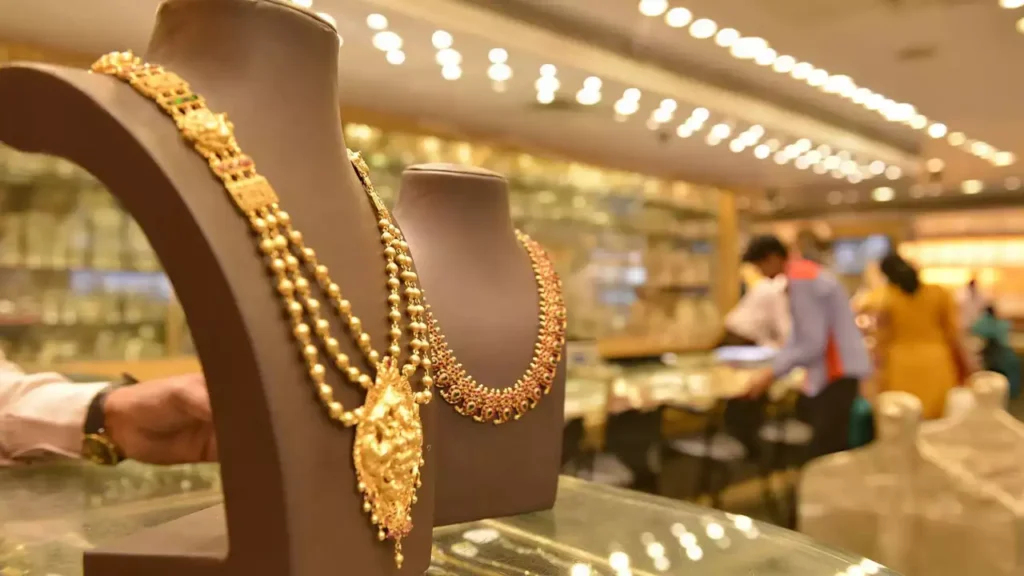Wedding-related expenditure has remained muted this fiscal year, unlike FY23, as several company chief executives have observed. This can be attributed to the absence of pent-up demand, a lower number of wedding dates, and the overall impact of the consumption slowdown.
According to industry estimates, sales in categories such as ethnic wear, wedding wear, gold jewellery, and electronic household appliances have experienced a decline of 10-20% in FY24 up to February, compared to the corresponding period in FY23.
Nonetheless, chief executives noted that luxury and premium products defied the trend of declining sales, reflecting the broader pattern in consumption.
Vedant Fashions, renowned for brands like Manyavar and Mohey in the wedding and ethnic apparel sector, informed investors recently that its overall performance for the nine months ending December 2023 was affected by several factors. These included a notable decrease in weddings, a general slowdown affecting consumer sentiment, and the higher base effect from the previous year post-COVID.
“When we talk to all the people in the industry this includes banquet hall owners, five star hotels, event organizers we see an overall trend where everyone is kind of commenting that the (wedding) business this year has been lower than last year,” said Vedant Modi, chief revenue officer at Vedant Fashions. He said there is a bit of “economic slowdown” across the board especially in tier two and tier three markets.
Continue Exploring: Hotel chains ride the wave of India’s wedding tourism surge with innovative offerings
The rising gold prices have added to the challenge. Gold prices have been on an upward trajectory since October, spurred by the conflict between Israel and Palestine. Prices surged by 7.6% from INR 61,000 per 10 gm in early November to a record high of INR 65,635 per 10 gm on Monday. Consequently, demand for gold jewelry has dropped by more than 20% between November and February compared to the same period last fiscal year.
Ishu Datwani, director of Mumbai-based Anmol Jewellers, highlighted that the mass market wedding jewellery segment is experiencing the most significant impact. Conversely, luxury items adorned with diamonds and colored gemstones are defying the trend, Datwani noted.
Sales across various mass-market segments, spanning from fast-moving consumer goods, apparel, and shoes to electronic products, have been significantly affected since the onset of Covid. This impact has been compounded by high inflation and negative consumer sentiment prevailing across both urban and rural India.
Projections for demand improvement have been pushed back from last year to the upcoming fiscal, with promising macroeconomic factors providing a glimmer of hope. Reserve Bank of India Governor Shaktikanta Das recently stated that India’s economy is expected to grow faster than the previous estimate of 7.6% in FY24 and may maintain a growth rate of 7% in the following fiscal year as well.
Kamal Nandi, the business head of Godrej Appliances, stated that mass products did not witness the anticipated sales surge during this wedding season. Now, the only remaining hope lies in a weather-dependent recovery in demand during the summer.
According to an industry executive, the wholesale textile market in Surat, serving smaller towns and rural areas, has seen a significant 40% decline in wedding-related demand.
This stands in stark contrast to the recent report from leading apparel manufacturer Aditya Birla Fashion & Retail, which highlighted impressive growth in its designer brands, largely attributed to the wedding season. Sabyasachi saw a remarkable 43% year-on-year increase, achieving its highest-ever quarterly revenue. Additionally, Shantnu & Nikhil experienced a growth of 30%, while House of Masaba recorded a 16% increase.
Continue Exploring: Jewellery consumption set for 10-12% value growth in FY24, driven by soaring gold prices: ICRA
